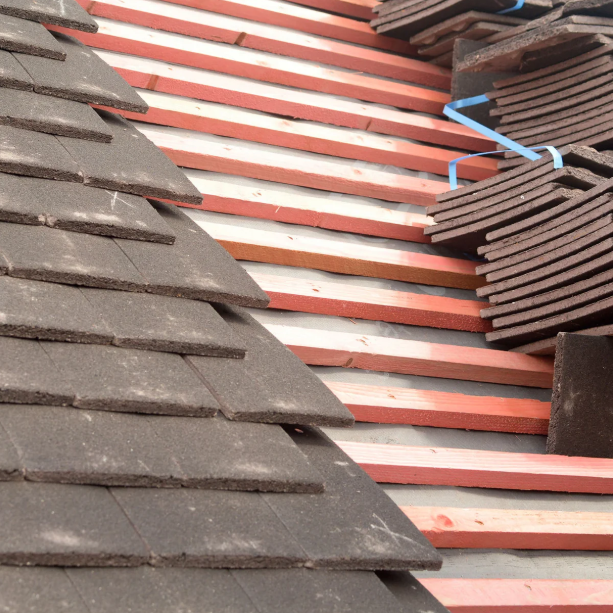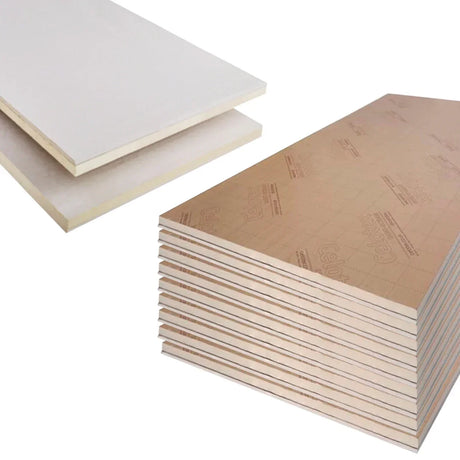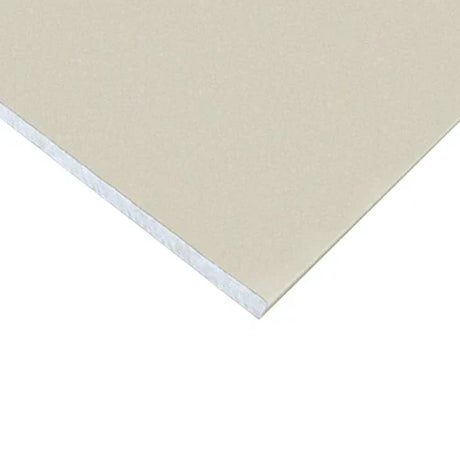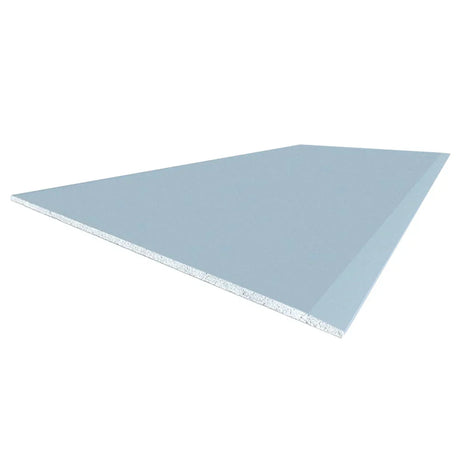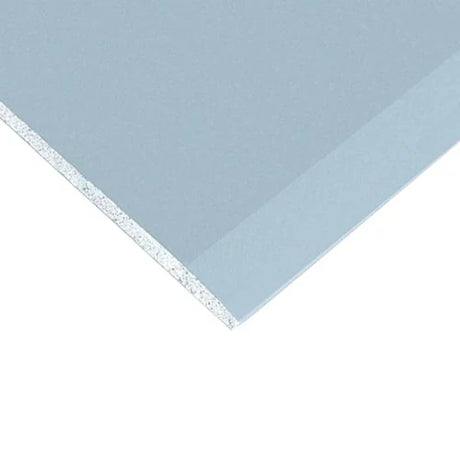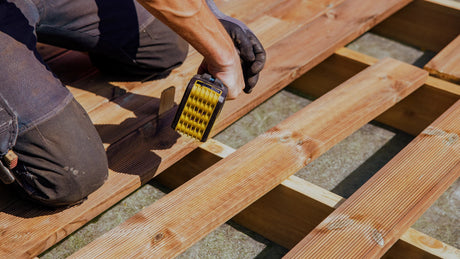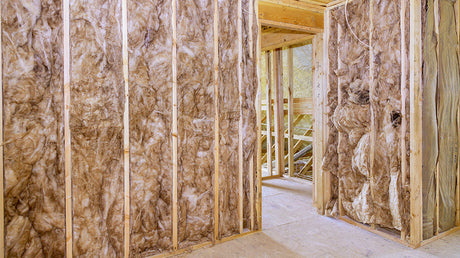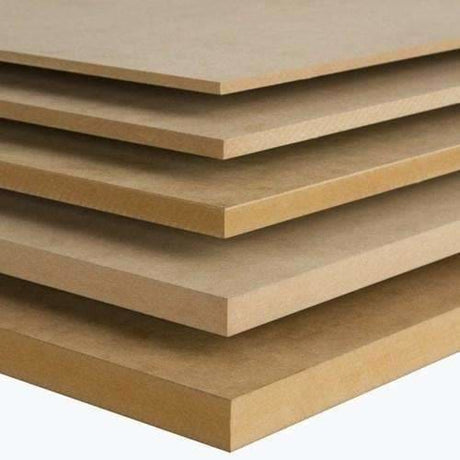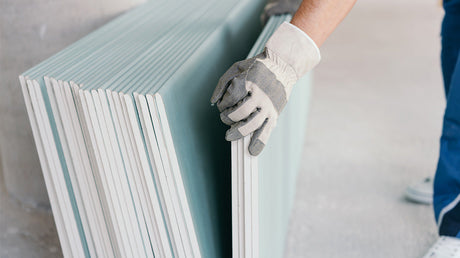The Lifespan of Different Roofing Materials: What You Need to Know
At DIY Building Supplies, our decades of experience serving both DIY enthusiasts and trade professionals across the UK has given us unique insight into the longevity and performance of various roofing materials. As a national supplier of premium building materials, we understand that selecting the right roofing material represents more than just an immediate construction decision—it's a long-term investment in your property's future. In this comprehensive guide, we'll share our expertise to help you understand the expected lifespan of different roofing materials and make an informed decision that balances durability, cost-effectiveness, and performance in the challenging British climate.
Natural Slate: The Centenarian of Roofing Materials
When discussing the pinnacle of roofing material longevity, natural slate stands unrivaled in its durability and timeless appeal. Premium Welsh slate, particularly from the renowned Snowdonia region, consistently demonstrates an exceptional service life exceeding 100 years when properly installed and maintained. This remarkable longevity isn't merely a marketing claim—it's rooted in the material's unique geological composition, which combines approximately 60-65% silica with precisely balanced proportions of alumina and iron oxides.
The extraordinary durability of Welsh slate manifests in its impressive technical specifications. With a density ranging from 2,800 to 2,900 kg/m³ and water absorption rates below 0.4%, these slates create an nearly impenetrable barrier against the British weather. The material's flexural strength, exceeding 60 MPa, ensures it maintains its protective properties even under severe weather conditions, while its natural resistance to chemical degradation makes it particularly valuable in challenging coastal environments.
This exceptional performance is evidenced across the UK's architectural landscape. Throughout Cardiff's Bay area, Victorian-era buildings still maintain their original slate roofs after more than 120 years of service. Similar examples can be found across London's historic districts and throughout the Snowdonia National Park, where centuries-old slate roofs continue to provide reliable protection against the elements.
The Lake District's Westmorland Green slate offers a compelling alternative, delivering comparable longevity while providing distinct aesthetic appeal. Its characteristic green hue, derived from natural chlorite minerals, maintains its distinctive character throughout its 80-100 year lifespan. With density measurements ranging from 2,750 to 2,850 kg/m³ and water absorption rates consistently below 0.5%, Westmorland slate demonstrates particularly impressive performance in areas where historical authenticity must be balanced with long-term durability.
Clay Tiles: Traditional Durability Meets Modern Innovation
The evolution of clay tile manufacturing represents one of the most successful marriages of traditional craftsmanship and contemporary technology in the building industry. Today's clay tiles, produced by leading UK manufacturers such as Marley, Sandtoft, and Wienerberger, offer impressive lifespans ranging from 60 to 80 years through sophisticated manufacturing processes that enhance the natural durability of clay while preserving its classic aesthetic appeal.
Modern clay tile production begins with a precisely controlled mixture of materials, where high-grade alluvial clay comprises 60-70% of the composition, complemented by 20-30% premium shale content. This base mixture is enhanced with carefully selected mineral additives and proprietary compounds, typically making up 7-15% of the final composition. Each component plays a crucial role in developing the material's exceptional performance characteristics.
The manufacturing process represents a triumph of precision engineering. Computer-controlled mixing systems ensure perfect consistency, while high-pressure extrusion at 1,000-1,200 psi creates the dense, compact structure essential for long-term durability. The critical drying phase extends over 24-48 hours under precisely controlled conditions, preventing the formation of micro-cracks that could compromise the tile's integrity. The firing process, conducted at temperatures between 1,000-1,200°C, transforms these carefully prepared materials into finished tiles with remarkable performance specifications.
The resulting products demonstrate impressive technical characteristics that make them ideal for the British climate. Modern clay tiles achieve densities between 1,900 and 2,000 kg/m³, while their compressive strength exceeds 25 N/mm². Water absorption rates below 6% and frost resistance exceeding 150 cycles ensure excellent performance in our challenging weather conditions. Their thermal conductivity values of 0.6-0.7 W/mK contribute to overall building energy efficiency.
Different profiles of clay tiles offer varying lifespans and performance characteristics. Traditional plain tiles, with their classic dimensions of 265mm x 165mm, typically achieve 60-70 years of reliable service. Their higher coverage requirement of 60-65 tiles per square metre creates the characteristic textured appearance that defines many British roofscapes. Pantiles, with their larger dimensions of 365mm x 225mm, often extend to 65-75 years of service while requiring only 15-18 tiles per square metre. Modern Roman tiles push these boundaries further, with service lives often reaching 70-80 years while providing efficient coverage at 10-12 tiles per square metre.
Concrete Tiles: Engineered for Longevity
The evolution of concrete tile technology represents one of the most significant advances in modern roofing materials. Today's concrete tiles, with their impressive 50-60 year lifespan, showcase how sophisticated engineering can create cost-effective, durable roofing solutions that meet the demanding requirements of British weather conditions. The success of modern concrete tiles lies in their carefully formulated composition and advanced manufacturing processes that transform basic materials into high-performance roofing products.
At the heart of contemporary concrete tile production lies a precisely calculated mixture of materials. Portland cement, comprising 30-35% of the composition, provides the foundational strength essential for long-term durability. This is combined with meticulously graded aggregates making up 45-50% of the mixture, ensuring optimal particle distribution for maximum structural integrity. The addition of specialised performance-enhancing additives and carefully selected pigments, accounting for the remaining proportion, creates a material that balances strength, durability, and aesthetic appeal.
The manufacturing process itself demonstrates the remarkable precision of modern production techniques. Tiles are formed under compression forces exceeding 20 MPa, creating products with exceptional density and strength characteristics. The subsequent curing period, carefully controlled over 24-28 days, allows the concrete to develop its full performance potential while maintaining precise dimensional stability. Throughout this process, rigorous quality control testing ensures consistency across production batches, while specialised surface treatments enhance both appearance and weathering resistance.
Perhaps the most significant advancement in concrete tile technology has been the development of through-coloured manufacturing processes. Unlike earlier surface-coated products, modern through-coloured tiles incorporate pigments throughout their entire thickness. This innovation ensures colour stability even as the tile weathers over time, maintaining its appearance throughout its service life. The integration of UV-stable pigments and carefully formulated mineral treatments creates products that retain their aesthetic appeal while providing excellent protection against the elements.
Modern Metal Roofing Systems: Advanced Protection for Contemporary Architecture
The realm of metal roofing has undergone a remarkable transformation in recent decades, with contemporary systems offering unprecedented combinations of durability, performance, and architectural flexibility. Leading British manufacturers like Corus and Tata Steel have pioneered innovations that have redefined expectations for metal roofing, creating systems that provide decades of reliable service while offering new possibilities for architectural expression.
Standing seam systems exemplify the sophistication of modern metal roofing technology. Aluminium systems, typically crafted from 3004 or 3005 alloy grades with thicknesses ranging from 0.7 to 1.0mm, achieve an optimal balance of strength and workability. These systems deliver tensile strength exceeding 145 MPa while maintaining the flexibility needed to accommodate thermal movement, a crucial consideration given aluminium's thermal expansion coefficient of 24 x 10⁻⁶/°C. With proper installation and maintenance, aluminium systems consistently achieve service lives of 40-50 years.
Zinc systems, manufactured to exacting EN 988 standards, offer another premium option in the metal roofing category. With material thicknesses between 0.7 and 0.8mm and tensile strength exceeding 150 MPa, zinc roofing provides exceptional durability while developing a distinctive patina that enhances its aesthetic appeal over time. This natural ageing process not only adds character but also contributes to the material's longevity by forming a protective layer against environmental factors. Zinc systems regularly achieve lifespans of 60-80 years, making them one of the most durable metal roofing options available.
Steel systems, typically fabricated from S280GD+Z grade material, provide robust performance characteristics while offering a more economical price point. Modern coating technologies, including PVdF and PVC plastisol finishes, have revolutionized the longevity of steel roofing. These advanced coatings maintain their appearance and protective properties for 25-30 years, contributing to overall system lifespans of 30-40 years. The combination of structural strength and sophisticated coating technology creates a roofing solution that balances performance with value.
The performance capabilities of modern metal roofing systems extend far beyond their material properties. Contemporary designs can accommodate roof pitches as low as 5 degrees, while panels up to 12 metres in length create clean, uninterrupted roof lines. Sophisticated seam designs and fixing systems ensure water-tightness while accommodating thermal movement of ±20mm, essential for long-term performance reliability. Wind uplift resistance of 3.0 kN/m² exceeds typical requirements for most UK locations, while acoustic performance ratings of 35-40 dB contribute significantly to occupant comfort.
The development of composite panel systems represents another significant advancement in metal roofing technology. These sophisticated assemblies combine the durability of metal outer skins with high-performance insulation cores, creating integrated solutions that address multiple building performance requirements simultaneously. External weather sheets of 0.5 to 0.7mm thick steel or aluminium protect high-performance PIR or mineral wool cores, while internal liner sheets complete the assembly. This integrated approach achieves remarkable thermal performance, with U-values ranging from 0.15 to 0.35 W/m²K depending on core thickness and specification.
Factors Affecting Roofing Material Lifespan: Understanding the Critical Variables
The actual service life of any roofing material is intrinsically linked to a complex interplay of environmental, installation, and maintenance factors. Understanding these variables is crucial for maximising the longevity of your roofing investment. At DIY Building Supplies, our extensive experience across diverse UK regions has provided us with unique insights into how these factors influence roofing performance over time.
The British Climate Challenge: Regional Considerations and Solutions
The British climate presents a uniquely demanding environment for roofing materials, with distinct regional variations that significantly impact performance and longevity. Our maritime location, combined with diverse topographical features, creates microclimates that demand carefully considered roofing solutions. Understanding these regional variations is essential for selecting materials that will provide optimal performance throughout their service life.
Coastal environments present perhaps the most demanding conditions for roofing materials in the UK. Properties within five to ten miles of the coastline face a constant assault from salt-laden air, with wind speeds typically 20-30% higher than inland areas. This combination creates a particularly corrosive environment that can significantly impact the longevity of metal components and fixings. Our experience has shown that salt exposure can accelerate corrosion rates by up to 40% compared to inland locations, necessitating specific material selections and enhanced maintenance protocols.
Urban environments create their own distinct challenges for roofing materials. The combination of industrial pollution, acid rain, and heat island effects can significantly impact material degradation rates.. These conditions demand materials with enhanced chemical resistance and specific surface treatments designed to withstand urban environmental stresses.
Rural locations, while seemingly less challenging, present their own set of unique demands on roofing materials. Greater exposure to temperature fluctuations, combined with higher humidity levels in wooded areas, creates conditions that can accelerate the growth of organic matter on roofing surfaces. The increased likelihood of frost formation and snow accumulation in rural areas also requires careful consideration of both material selection and installation techniques to ensure long-term performance.
Installation Excellence: The Foundation of Longevity
The importance of proper installation cannot be overstated when considering roofing material lifespan.
Structural considerations form the foundation of proper installation practices. Each roofing material requires specific structural preparations and fixing patterns based on factors such as exposure zone, anticipated loads, and material characteristics. The correct specification of rafter and batten spacing, for instance, can significantly impact long-term performance.
Ventilation system design and implementation represent another critical aspect of installation quality. Modern building practices have created increasingly airtight structures, making proper roof ventilation more crucial than ever. The integration of appropriate vapour control layers and strategic placement of ventilation components ensures effective moisture management throughout the roof's service life.
The Science of Preventative Maintenance
Implementing an effective maintenance strategy can significantly extend the service life of any roofing system. Our research indicates that proper maintenance can increase material lifespan by 25-50% compared to unmaintained installations.
Regular inspections form the cornerstone of effective maintenance. These inspections utilise advanced diagnostic techniques to identify potential issues before they develop into significant problems. Photographic documentation and detailed reporting provide property owners with clear records of their roof's condition and any necessary maintenance requirements.
Drainage system maintenance plays a particularly crucial role in extending roofing material lifespan. The British climate's frequent rainfall makes effective water management essential for roof longevity. Our maintenance protocols include regular clearing of gutters and downpipes, inspection of valley gutters, and assessment of drainage system capacity. This systematic approach helps prevent water-related issues that could compromise the roof's integrity.
Making Your Decision: A Strategic Approach to Roofing Selection
The selection of appropriate roofing materials represents a significant investment decision that extends far beyond initial cost considerations. At DIY Building Supplies, we advocate for a comprehensive approach to material selection that considers both immediate requirements and long-term implications. This strategic perspective ensures that your roofing investment delivers optimal value throughout its entire service life.
Understanding Life-Cycle Costs: Beyond the Initial Investment
The true cost of a roofing system extends well beyond the initial purchase price of materials. Our experience has shown that focusing solely on upfront costs often leads to suboptimal decisions that may result in higher overall expenditure over the roof's lifespan. A comprehensive life-cycle cost analysis takes into account various factors that influence the total cost of ownership throughout the system's service life.
Initial investment considerations encompass more than just material costs per square metre. The complexity of installation, requirements for specialised equipment or skills, and site-specific preparation needs all contribute to the total initial investment. For instance, while natural slate commands a premium initial cost, its exceptional durability and minimal maintenance requirements often result in lower overall life-cycle costs compared to less expensive alternatives. Similarly, modern metal roofing systems may require a higher upfront investment but can deliver significant long-term savings through reduced maintenance needs and enhanced energy efficiency.
Long-term value assessment must consider ongoing maintenance requirements, potential repair costs, and the material's impact on property value. Our analysis of various roofing systems reveals that materials with higher initial costs often deliver superior long-term value through extended service life and reduced maintenance requirements. Energy efficiency benefits, particularly from modern composite systems and reflective metal roofing, can contribute significantly to reduced operating costs over the system's lifespan.
Navigating Planning Requirements and Building Regulations
The regulatory framework governing roofing materials in the UK has evolved to become increasingly comprehensive, reflecting growing concerns about safety, energy efficiency, and environmental impact. Understanding and complying with these requirements is crucial for ensuring your project's success and avoiding costly modifications or penalties.
Local authority considerations vary significantly across different regions and property types. Conservation areas and listed buildings often have specific requirements regarding material selection, colour schemes, and installation methods. Our technical team maintains current knowledge of local planning requirements across the UK, helping ensure that material selections align with regulatory requirements while meeting performance objectives.
Building regulations' compliance extends beyond simple material approval. Current regulations encompass structural loading capabilities, fire resistance ratings, and thermal performance requirements. The introduction of more stringent energy efficiency standards has placed particular emphasis on the thermal performance of roofing systems. Modern materials must demonstrate compliance with minimum U-value requirements while providing effective moisture management and ventilation capabilities.
Environmental Considerations in Material Selection
Environmental impact has become an increasingly important factor in roofing material selection. This consideration extends beyond simple energy efficiency to encompass the entire lifecycle of the roofing system, from manufacturing through eventual disposal or recycling. Our commitment to environmental responsibility is reflected in our carefully curated selection of materials that balance performance requirements with sustainability considerations.
Climate adaptation plays a crucial role in material selection, particularly given the changing patterns of weather events in the UK. Materials must demonstrate resilience to more frequent extreme weather events while maintaining their protective properties throughout their service life. Our technical team employs sophisticated modelling techniques to evaluate material performance under various climate scenarios, ensuring selections that will perform reliably under evolving environmental conditions.
Expert Support and Implementation: Ensuring Project Success
The successful implementation of any roofing project requires more than just quality materials—it demands comprehensive technical support and practical expertise throughout the project lifecycle. At DIY Building Supplies, we've developed sophisticated support systems designed to ensure optimal outcomes for every project we supply, regardless of scale or complexity.
Installation Support and Quality Assurance
The transition from design to implementation represents a critical phase in any roofing project. Our installation support services ensure that the carefully considered design specifications are translated into practical reality on site. This support begins with comprehensive pre-installation checks and continues through regular progress monitoring and final performance verification.
Quality assurance measures are implemented throughout the installation process, with particular attention paid to critical details and interfaces. Our technical team provides detailed guidance for complex installations, ensuring that challenging areas receive appropriate attention and treatment. Documentation of installation progress and verification of key details helps ensure that the completed installation meets all design requirements and warranty conditions.
Conclusion: Ensuring Long-Term Success
The selection and implementation of appropriate roofing materials represents a complex decision requiring careful consideration of multiple technical, practical, and environmental factors. At DIY Building Supplies, our comprehensive support services are designed to guide you through every aspect of this process, from initial material selection through long-term maintenance planning.
Whether you're a DIY enthusiast undertaking your first roofing project or a seasoned trade professional seeking the optimal solution for a complex installation, our technical team stands ready to provide the knowledge, materials, and support you need to achieve outstanding results. Contact us to discuss your specific requirements and discover how our expertise can contribute to your project's success.

